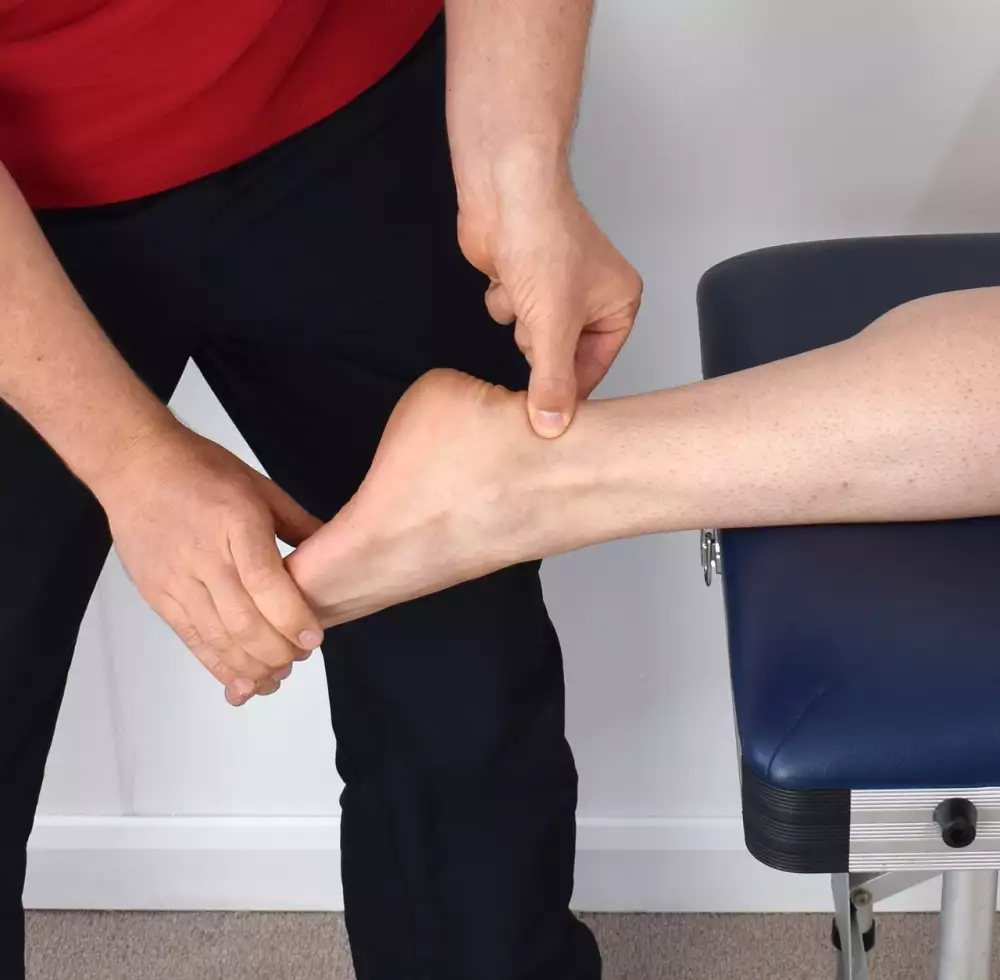Achilles tendon: A key element for foot health and movement

- Anatomy of the Achilles tendon
- Functions of the Achilles tendon
- Causes of Achilles tendon problems
- Achilles tendon pain and injury
- Diagnosis of Achilles tendon problems
- Treatment and prevention of Achilles tendon problems
- Rehabilitation after Achilles tendon injury
- Recommendations for Achilles tendon care
The Achilles tendon, named after the ancient hero Achilles, is one of the most important tendons in the human body. This strong and firm tendon connects the calf muscle to the heel bone, allowing the foot to move when walking, running or jumping. We have all certainly experienced pain in this area and know how frustrating it can be. In this article, we'll look at the function of the Achilles tendon, the risks of injury and ways to prevent these problems.
Anatomy of the Achilles tendon
The Achilles tendon is the longest and strongest tendon in the human body. It is located in the arch of the foot and connects the calf muscle to the heel bone. Anatomically, it is an extension of the massive calf muscle, which together with other muscles (e.g. gastrocnemius, soleus) allows movement of the foot at the ankle and toes. The Achilles tendon serves as a stabiliser of the entire lower limb and its disruption can lead to pain, stiffness or even complete immobilisation of the leg. Especially in athletes, this tendon is often injured by overuse and insufficient stretching. In such cases, immediate medical attention and rehabilitation are necessary to prevent permanent damage.
Functions of the Achilles tendon
The Achilles tendon, located in the arch of the foot, performs an important function in the movement of the foot. This largest tendon in the human body connects the calf muscle to the heel bone, allowing the foot to bend downwards. This is essential for walking, running, jumping and other lower limb movements. The Achilles tendon also absorbs shock during walking and running, which protects our joints and bones. It is one of the most stressed structures in the body and therefore can be prone to strain or even tears, which can lead to loss of leg function and pain. This is why we should ensure proper hydration, good shoes suited to the sport and a proper warm-up before physical activity.
Causes of Achilles tendon problems
Achilles tendon problems can be caused by several factors. One of the main reasons is repetitive overuse, which can occur as a result of intense sports, especially running and jumping. In addition, genetic factors and being overweight can contribute to Achilles tendon problems. Also, inadequate warm-up before sporting activity and inappropriate shoes can be risk factors for developing these difficulties. Untreated inflammatory diseases such as arthritis or osteoporosis can also lead to Achilles tendon problems. Therefore, we should be careful and take precautions to minimize this kind of pain and injury.
Achilles tendon pain and injury
Achilles tendon pain and injury is a relatively common problem that can affect athletes and everyday people. This tendon is located in the arch of the foot and connects the calf muscle to the heel. Overloading this tendon can lead to micro tears, inflammation, or even complete rupture. Risk factors include sudden changes in training schedule, poor footing and worn out shoes. If a patient experiences pain in the calcaneus after standing all day or after sports activity, it is important to seek professional help to prevent more serious complications.
Diagnosis of Achilles tendon problems
Diagnosing Achilles tendon problems involves several important steps that can help determine what is causing pain and discomfort in the area. The most common methods of diagnosis include physical examination, ultrasound and X-rays, or magnetic resonance imaging. During the examination, the doctor will look for symptoms such as swelling, redness or soreness when handling the Achilles tendon and surrounding tissues. Other tests may be needed to rule out other conditions such as fractures or arthritis. Proper diagnosis is a key step to proper treatment of your achilles tendonitis.
Treatment and prevention of Achilles tendon problems
The Achilles tendon is one of the most important tendons in the arch of the foot, allowing the foot to move and flex. However, when excessive loads are applied, this tendon can become overstretched and various problems such as pain, swelling or even inflammation can occur. Treatment of these Achilles tendon problems consists of resting and then rehabilitating the limb with special exercises to strengthen, stretch and relax the muscles. Prevention of this disease also plays a big role, which consists in a gradual change in physical activity and the choice of appropriate footwear. It is important to make sure that the effort on the feet is distributed in the right way and not to underestimate the body's signals expressing fatigue or soreness. If necessary, a specialist - an orthopaedic surgeon or physiotherapist - can be contacted to help diagnose and treat Achilles tendon injuries.
Rehabilitation after Achilles tendon injury
Rehabilitation after an Achilles tendon injury is a key step in the process of treating this type of injury. Although each case of injury is individual and requires a specific approach, there are some common rehabilitation steps that can help to achieve the fastest and most effective recovery. These methods include physiotherapy, exercises to strengthen the leg muscles and stretching the Achilles tendon. Special attention should be paid to the area around the injured tendon to prevent re-injury. Monitoring progress throughout rehabilitation and working with specialists to treat the injury are also very important for a successful recovery.
Recommendations for Achilles tendon care
If you are experiencing pain in the Achilles tendon area, you may find it helpful to familiarize yourself with some recommendations that can help alleviate your discomfort and prevent further injury. First, it is important to avoid excessive stress on this tendon, which includes, for example, vigorous running or jumping over obstacles. In addition, it is advisable to wear adequate and well-fitting shoes with sufficient support for the arch of the foot. In addition, it may be beneficial to perform regular muscle stretching exercises, particularly on the calf muscles and the Achilles tendon itself. However, should the pain persist, a consultation with a medical professional is recommended to further diagnose and address your difficulties.
In conclusion, the Achilles tendon is one of the key elements for the proper function of the arch of the foot. Its inflammation or rupture can lead to serious problems and limitation of movement. Therefore, we should take care to prevent it and regularly strengthen the muscles of the legs and feet so that they are able to withstand the increased stress of sports or normal daily activities. Remember that a healthy Achilles tendon is an important factor in maintaining the long-term health of the feet and the whole body.
Published: 17. 08. 2023 / Updated: 08. 10. 2023
Category: Health



